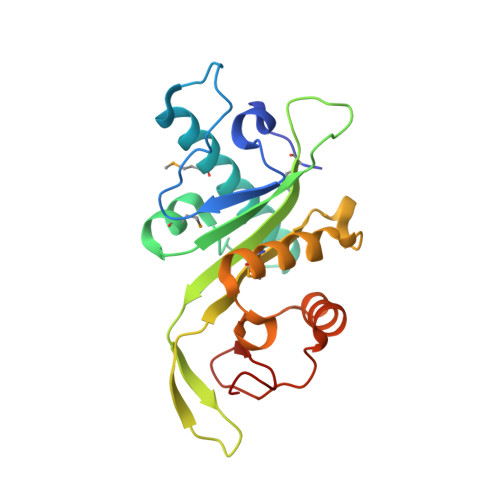Structural and Functional Characterization of the alpha-Tubulin Acetyltransferase MEC-17.
Davenport, A.M., Collins, L.N., Chiu, H., Minor, P.J., Sternberg, P.W., Hoelz, A.(2014) J Mol Biology 426: 2605-2616
- PubMed: 24846647
- DOI: https://doi.org/10.1016/j.jmb.2014.05.009
- Primary Citation of Related Structures:
4IF5 - PubMed Abstract:
Tubulin protomers undergo an extensive array of post-translational modifications to tailor microtubules to specific tasks. One such modification, the acetylation of lysine 40 of α-tubulin, located in the lumen of microtubules, is associated with stable, long-living microtubule structures. MEC-17 was recently identified as the acetyltransferase that mediates this event. We have determined the crystal structure of the catalytic core of human MEC-17 in complex with its cofactor acetyl-CoA at 1.7Å resolution. The structure reveals that the MEC-17 core adopts a canonical Gcn5-related N-acetyltransferase (GNAT) fold that is decorated with extensive surface loops. An enzymatic analysis of 33 MEC-17 surface mutants identifies hot-spot residues for catalysis and substrate recognition. A large, evolutionarily conserved hydrophobic surface patch that is critical for enzymatic activity is identified, suggesting that specificity is achieved by interactions with the α-tubulin substrate that extend outside of the modified surface loop. An analysis of MEC-17 mutants in Caenorhabditis elegans shows that enzymatic activity is dispensable for touch sensitivity.
- Division of Chemistry and Chemical Engineering, California Institute of Technology, 1200 East California Boulevard, Pasadena, CA 91125, USA.
Organizational Affiliation:



















